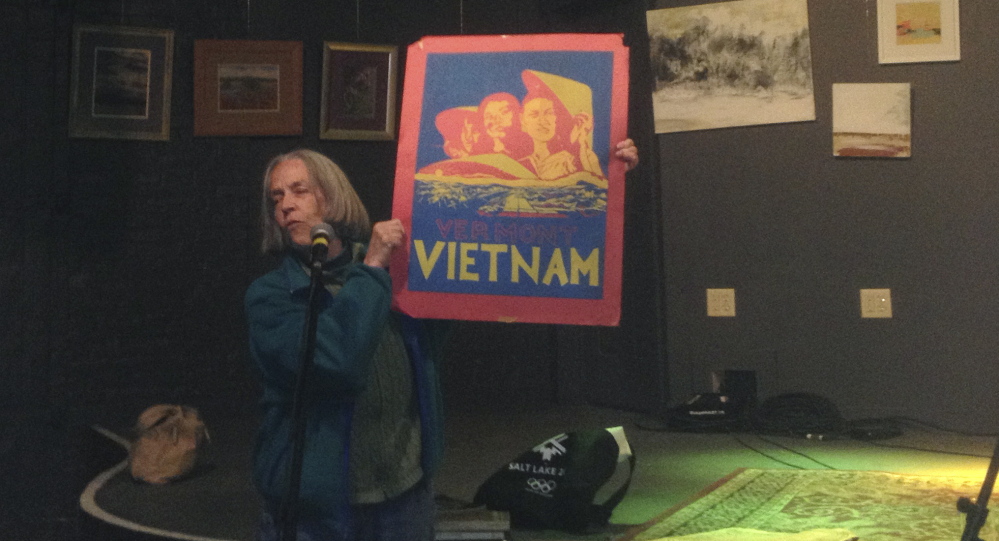BURLINGTON, Vt. — Aside from peace signs and food cooperatives, the 1970s influx of longhaired youth to Vermont brought experimental communes to the hillsides and social activism, as well as drug use and fears of a hippie invasion.
Now the Vermont Historical Society is collecting stories and artifacts in a two-year study to document the lasting influence the decade has had on the state. It’s holding forums around the state for people to tell their stories, good and bad, about that era in Vermont.
“The hippie generation is not just drugs, sex and rock ‘n’ roll, as we all can attest to,” Ann Taylor, 63, said at a forum last week in Burlington. “What I truly love is that we were involved politically, back to earth. We care about nature. We understand the wellness concept and what that is.”
Vermont’s population, which had been relatively stagnant, jumped 14 percent in the 1960s and 15 percent in the 1970s, with more than half the increase in the latter decade from people moving in from out of state. At the time, the average age in the U.S. was 27.
The working theory is that the events of the decade and people who came here helped changed Vermont from a largely conservative state to one of the most liberal, leaving a legacy of organic farming, interest in locally raised food and a rediscovery of older ways of living and growing food, to name a few.
“These are not 100 percent new things or new ideas, but they really seem to start to coalesce in the ’70s,” said Amanda Gustin, public program coordinator for the historical society.
Around that time, U.S. Sen. Bernie Sanders came to Vermont as part of the counterculture, back-to-the-land movement, and Patrick Leahy became the first and only Democrat to be elected to the U.S. Senate from Vermont in 1974. Some newcomers who stayed continued as community activists, went into local government and are now serving as legislators, Gustin said.
“I think there’s something to be said for sort of the more progressive wing of politics getting its start in Vermont in the 1970s,” Gustin said.
That was clear in one of the community forums last week in Burlington, attended by more than 60 people.
Aging hippies talked proudly of working to develop the People’s Free Clinic in Burlington staffed by volunteer doctors and staff, which grew into the Community Health Center. They also spoke of starting a food cooperative that grew into City Market, a women’s health center and a biweekly statewide newspaper.
“It was a great time, and it’s nice to see that a lot of what we all started and we had our heart in has carried through. … And I think it changed Vermont,” said Jennifer Kochman, one of the founding board members of the Vermont Women’s Health Center.
They shared colorful stories, like when a family named Man, Woman and Child came to Goddard College in Plainfield, a hotbed of counterculture society, with the parents dressed in loincloths and the baby naked.
Vermonters were aware of the hippie presence. Rik Carlson said a friend from Connecticut sent him a postcard addressed to him, care of the Hippies on the Hill, Richmond, Vermont, and he got it the next day.
A rumor spread through Vermont that 50,000 hippies would descend on the state in the summer of 1971, sparking fears of unrest among some residents following the riots around the country, bombings by the radical Weathermen group and the Manson family murders, said historical society curator Jackie Calder.
Republican Gov. Deane C. Davis held a news conference to quell those fears, saying the estimates were at the most 5,000 and there was nothing he could do if they were peaceful and not breaking any laws, she said.
The Historical Society has documented 45 communes in Vermont during that period. Aside from the forums, it’s also doing an online survey and taking comments from people by phone or email.
Send questions/comments to the editors.




Comments are no longer available on this story